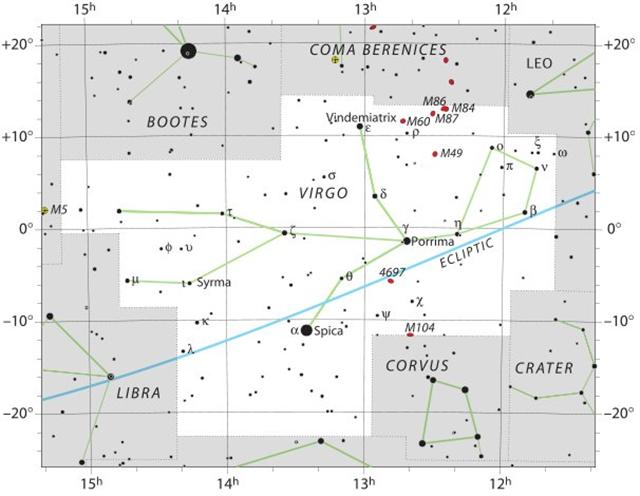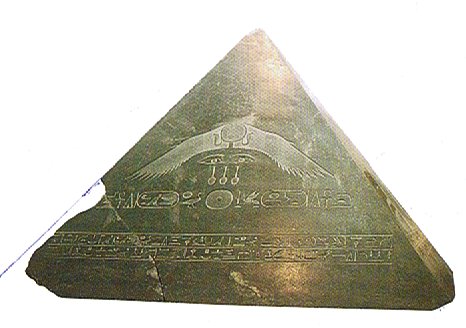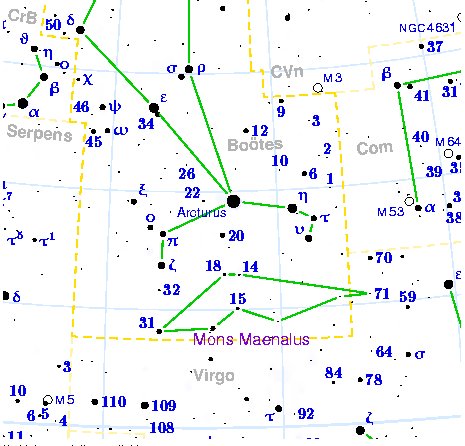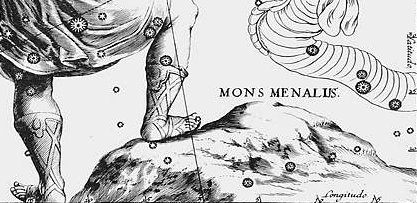TAHUA
20. Also the words of Metoro suggest a
correspondence between Apami-Atsa (θ) and Heze
(ζ):

 |
 |
 |
 |
|
Aa8-67 (1316) |
Aa8-68 |
Aa8-69 (664 + 654) |
Aa8-70 (655) |
|
Oct 3 |
4 |
5 |
6 (*199) |
|
VINDEMIATRIX (ε) |
*197 |
APAMI-ATSA (θ) |
*199 |
| kua noho i te henua - i te ragi |
ma to ua |
ma te maitaki |
i te henua |
|
Egyptian
nfr |
 |
Phoenician
teth |
 |
Greek
theta |
Θ (θ) |
|
... The form of the letter θ suggests a
midline ('waist'), although the origin of θ is the
Phoenician tēth which means 'wheel'. This in turn
could have originated from a glyph named 'good' which in
Egypt was nfr ...
... θ is the last star in the Ara
constellation, and the ancient meaning of this letter
was described as a wheel by the Phoenicians but for the
Egyptian it meant 'good'. When the wheel of time has
come full cycle around and the upside down fire-altar is
in the past the times ahead should be good (or lucky
Sa'ad) ...
According to Wilkinson nefer
originally depicted the throat and heart of a sheep:

 |
 |
 |
 |
 |
|
Aa8-71 (1320) |
Aa8-72 (→ 9 * 73 = 657) |
Aa8-73 → 8 * 73 = 584 |
Aa8-74 (664 +
659 = 1323) |
|
Oct 7
(280) |
8 |
9 (282, *202) |
10 |
|
σ Virginis (*200.4) |
*201 |
SPICA (*202) |
71 Virginis |
|
ma te akau ua - kua
vari te vaero |
o te nuku huki - e nuku mata |


... The Sun-god thence climbed up the
mother-mountain of the Kushika race as the constellation
Hercules, who is depicted in the old traditional pictorial
astronomy as climbing painfully up the hill to reach the
constellation of the Tortoise, now called Lyra, and thus attain
the polar star Vega, which was the polar star from 10000 to 8000
B.C. May not
this modern companion constellation,
Mons Maenalus,
be from a recollection of this early Hindu conception of our
Hercules transferred to the adjacent Bootes?
 |
 |
| Aa8-75 (1040
+ 284) |
Aa8-76
(664 + 661) |
|
Oct 11 (364 - 80) |
12 (285) |
|
*204 |
HEZE (ζ,
*205.0) |
|
mai tae hanau
hia - ki tona purega |
maitaki |
|
Manacle |
ziqq |
Phoenician zayin |
 |
Greek zeta |
Ζ
(ζ) |
|
... Zeta
(uppercase Ζ, lowercase
ζ; Greek: ζήτα
... is the sixth letter of the Greek alphabet. In the
system of Greek numerals, it has a value of 7. It was
derived from the Phoenician letter Zayin. Letters
that arose from zeta include the Roman Z and Cyrillic
З ...
Zayin
(also spelled Zain or Zayn or simply
Zay) is the seventh letter of many Semitic abjads
... It represents the sound [z].
The Phoenician letter appears to be named after a sword
or other weapon. (In Biblical Hebrew, 'Zayin'
means sword, and the verb 'Lezayen' means to arm.
In modern Hebrew, 'zayin' means penis and 'lezayen'
is a vulgar term which generally means to perform sexual
intercourse and is used in a similar fashion to the
English word fuck, although the older meaning survives
in 'maavak mezuyan' (armed struggle) and 'beton
mezuyan' (armed, i.e., reinforced concrete). The
Proto-Sinaitic glyph according to Brian Colless may have
been called ziqq, based on a hieroglyph depicting
a 'manacle'.

|
 |
*7 |
 |
|
Aa8-69 (664 + 654) |
Aa8-76
(664 + 661) |
|
Oct 5 (278) |
Oct 12
(285) |
|
APAMI-ATSA (θ) |
HEZE (ζ,
*205.0) |
| ma te maitaki |
maitaki |
The type of glyph which I have named
maitaki includes very
many variants of the fundamental idea.
But in the A text we have here and now to recognize only one
more such glyph, viz. the first one in the triplet::
 |
*16 |
 |
*7 |
 |
|
Aa8-53 (638) |
Aa8-69 (664 + 654) |
Aa8-76
(664 + 661) |
|
Sept 19
(262) |
Oct 5 (278) |
Oct 12
(285) |
| |
APAMI-ATSA (θ) |
HEZE (ζ,
*205.0) |
| te maitaki |
ma te maitaki |
maitaki |
→ 638 + 654 + 661 = 1953 =
63 * 31. (→ 31 * 9 weeks).
"... Math the son of Mathonwy, King of North Wales ... is
pictured as a sacred King of the ancient type whose virtue was
resident in the feet. Except when his kingdom was attacked and
he was obliged to ride into battle, Math was bound by convention
to keep his foot in the lap of a priestess ..." (Robert Graves:
The White Goddess)

|








